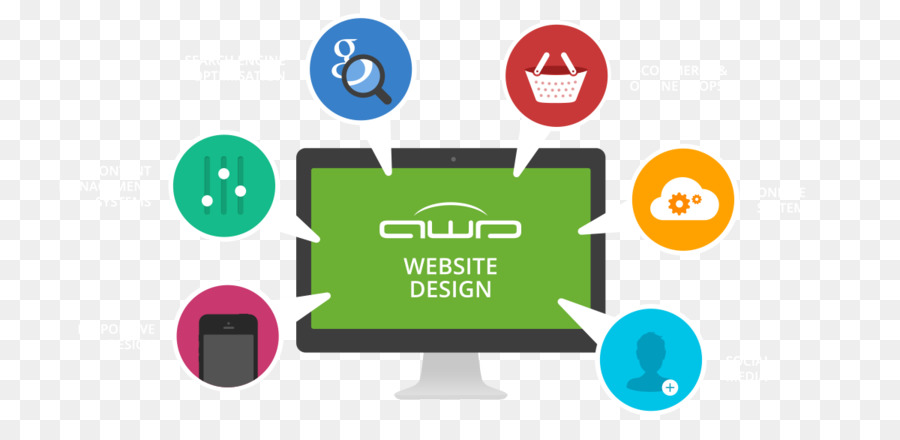Prepare To Journey Via Time And Uncover Just How Sites Have Actually Ended Up Being More Innovative, Straightforward, And Aesthetically Sensational
Prepare To Journey Via Time And Uncover Just How Sites Have Actually Ended Up Being More Innovative, Straightforward, And Aesthetically Sensational
Blog Article
Published By-Tobiasen Molina
In the past, websites were basic and focused on information. Navigation was straight, and style was for desktops. Currently, customer experience is crucial. Data overviews layouts for easy navigation. Receptive designs suit various tools. Today, dark setting minimizes strain, and minimal menus boost navigation. Interactive functions involve customers, and bold visuals stand out. AI assimilation increases involvement. See exactly how design has actually advanced to boost your online trip.
Early Days of Website Design
In the early days of web design, simplicity reigned supreme. Sites were standard, with minimal colors, fonts, and layouts. helpful resources got on supplying information instead of fancy visuals. Customers accessed the web with slow-moving dial-up connections, so rate and functionality were crucial.
Navigation food selections were straightforward, generally situated on top or side of the page. Web sites were developed for home computer, as mobile browsing had not been yet widespread. Content was king, and developers prioritized very easy readability over intricate design elements.
HTML was the key coding language utilized, and designers had to function within its restrictions. Animations and interactive functions were minimal contrasted to today's standards. Sites were fixed, with little vibrant web content or personalized user experiences.
Surge of User-Focused Design
With the evolution of web site style, a shift towards user-focused design principles has come to be progressively prominent. Today, creating web sites that focus on customer experience is vital for involving site visitors and achieving company goals. User-focused style includes comprehending the needs, choices, and habits of your target market to customize the website's format, content, and includes accordingly.
Developers now carry out thorough research, such as user surveys and use testing, to collect insights and feedback directly from individuals. This data-driven technique helps in developing instinctive navigation, clear calls-to-action, and aesthetically attractive interfaces that resonate with visitors. By positioning the individual at the facility of the design procedure, sites can supply a more individualized and pleasurable experience.
Receptive style has actually additionally emerged as a crucial facet of user-focused style, guaranteeing that internet sites are optimized for numerous devices and screen sizes. This flexibility boosts ease of access and use, catering to the diverse means users interact with websites today. Fundamentally, the increase of user-focused style signifies a shift towards creating digital experiences that focus on the requirements and expectations of completion individual.
Modern Trends in Web Design
Discover the most up to date fads forming web design today. One popular pattern is dark setting layout, supplying a streamlined and contemporary look while reducing eye stress in low-light settings. One more key fad is minimalist navigation, streamlining menus and boosting customer experience by focusing on essential elements. Integrating micro-interactions, such as animated buttons or scrolling effects, can develop an extra appealing and interactive web site. Receptive design remains crucial, making certain smooth customer experiences throughout different devices. In addition, utilizing vibrant typography and asymmetrical layouts can include visual rate of interest and accentuate certain content.
Integrating AI technology, like chatbots for client assistance or tailored suggestions, enhances customer interaction and enhances procedures. Access has also come to be a considerable pattern, with developers focusing on inclusive layout methods to satisfy diverse customer needs. Accepting sustainability by enhancing web site efficiency for speed and effectiveness is another arising pattern in web design. Working together with individual responses and information analytics to repeat and improve design continuously is important for remaining relevant in the ever-evolving electronic landscape. By embracing these modern-day trends, you can produce an aesthetically attractive, user-friendly internet site that resonates with your audience.
Final thought
As you review the advancement of internet site layout from the early days to now, you can see how user-focused layout has actually ended up being the driving pressure behind modern-day patterns.
Accept the journey of change and adjustment in website design, always maintaining the customer experience at the forefront.
Tippingpointdigital
Stay existing with the most recent trends and innovations, and never quit evolving your approach to produce visually sensational and straightforward websites.
Evolve, adjust, and create - the future of web design is in your hands.
